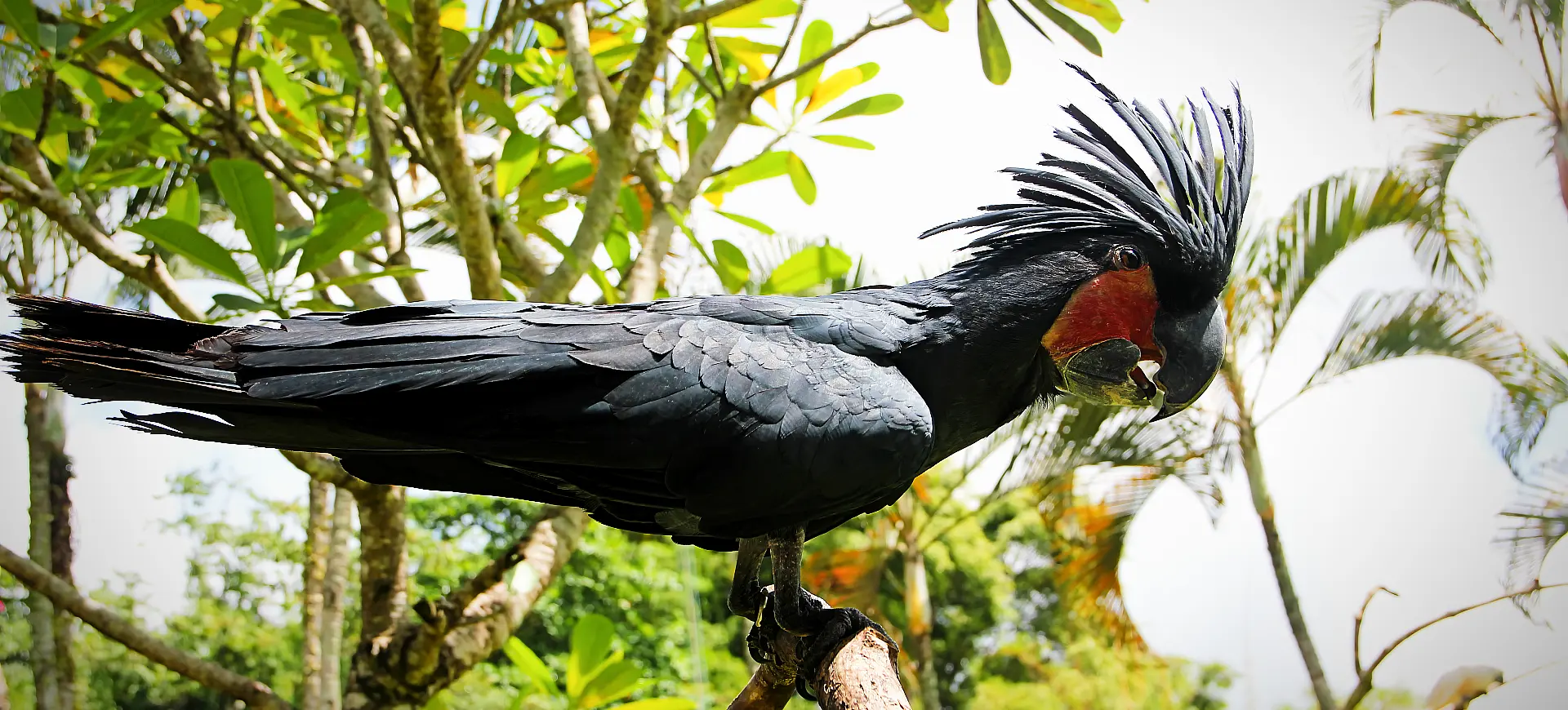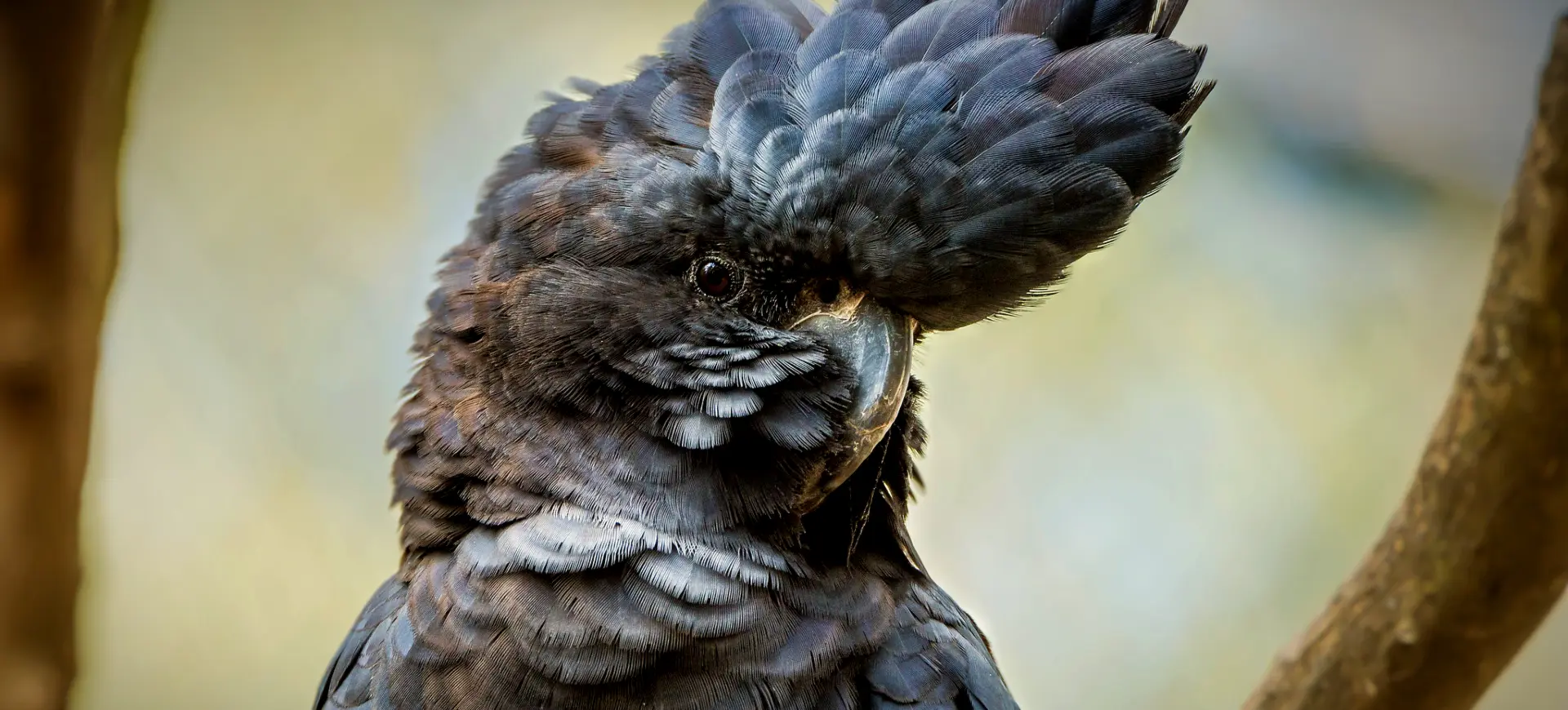Overview
The Galah, scientifically known as Eolophus roseicapilla, is a striking and widely recognized parrot native to Australia. Characterized by its beautiful pink and grey plumage, the Galah is a cockatoo family member known for its playful behavior and strong social bonds. Adults have a pale pink face and chest, grey wings, back, and tail, and a distinctive pink crest that they can raise or lower depending on their mood. Juveniles are duller in color and gradually acquire vibrant adult plumage as they mature.
Galahs are highly adaptable and can be found in various habitats across Australia, including woodlands, grasslands, and even urban areas. They are highly social and typically seen in large, noisy flocks of hundreds of birds. These flocks often gather to feed on seeds, nuts, fruits, and insects. The Galah’s playful antics, including hanging upside-down and performing acrobatic tricks and its ability to mimic speech have made it a popular pet. However, its needs are complex, and it requires a committed caretaker.
Despite the challenges of habitat loss and changes in the natural environment, the Galah population remains robust and widespread. Its adaptability to altered landscapes and diverse diet has contributed to its resilience. However, as with all wildlife, the conservation of natural habitats is crucial to ensure the continued survival of this charismatic species.
Taxonomy
Kingdom
Phylum
Class
Order
Family
Genus
Species
Sub Species
Type
Physical Description:
Galahs are medium-sized parrots, typically measuring around 14 inches long and weighing between 270-350 grams. The most striking feature of the Galah is its vibrant pink chest and face, contrasted with light to mid-grey wings, back, and tail. The crest is a lighter pink and is a key expressive feature, often raised when the bird is excited or alarmed. The eyes are dark brown in males and red in females, and the beak is a bone color, strong and curved, perfect for cracking nuts and seeds.
Their long and pointed wings allow for strong, agile flight. Galahs are a spectacular sight in the air, with the pink and grey of their plumage flashing in the sunlight. On the ground, they walk with a characteristic waddling gait but can also run quickly if necessary. Their zygodactyl feet, with two toes facing forward and two backward, are perfectly adapted for grasping and climbing.

Lifespan: Wild: ~40 Years || Captivity: ~60 Years

Weight: Male & Female: 0.6-0.77 lbs (0.27-.35 kg)

Length: Male & Female: 14 inches (35 cm)

Wingspan: Male & Female: 28-32 inches (70-80 cm)

Top Speed: 44 mph (70 km/h) in flight
Characteristic:
Native Habitat:
Galahs are endemic to Australia and are found in almost every part of the continent, from the bush and woodland areas to more arid regions and even urban environments. They prefer areas where trees are available for nesting and roosting, but they also adapt well to human-altered landscapes. The availability of water is also a key factor in their distribution.
Their natural habitats include eucalyptus woodlands, grasslands, and areas along watercourses. However, their adaptability means they are also commonly found in agricultural areas, parks, and gardens, making them one of the most familiar parrots to Australians.
Biomes:
Biogeographical Realms:
Continents:
Countries:
Diet:
Diet & Feeding Habits:
Galahs are omnivorous, with a diet primarily consisting of seeds, nuts, fruits, berries, and insects. They are particularly fond of the seeds of grasses and herbs and will often be seen foraging on the ground in large flocks. They can become pests in agricultural areas, feeding on cultivated grains and other crops.
In addition to their natural diet, Galahs need a source of calcium and other minerals, which they typically obtain from soil or by chewing on bones and wood. Their feeding habits are opportunistic, and they will readily take advantage of human food, contributing to their success in urban and suburban environments.
Mating Behavior:
Mating Description:
Galahs are monogamous and form strong, lifelong bonds with their mates. The breeding season varies depending on the region but generally occurs in the spring and summer. During this time, pairs perform elaborate courtship displays, including mutual preening, bill-fencing, and loud calling.
Nesting typically occurs in tree hollows, where the female lays 2-5 eggs. Both parents share incubation duties over about 25-30 days. Once the chicks hatch, both parents are involved in feeding and caring for them until they fledge at around 7-8 weeks of age. The young may stay with their parents for several months before becoming independent.
Reproduction Season:
Birth Type:
Pregnancy Duration:
Female Name:
Male Name:
Baby Name:
Social Structure Description:
Galahs are highly social and usually seen in flocks, ranging from a few individuals to hundreds or even thousands of birds. These flocks often consist of paired adults and their offspring, unpaired juveniles and subadults. They are known for their playful behavior, which includes aerial acrobatics, hanging upside-down, and playing with branches and other objects.
Within flocks, Galahs communicate with various calls and body language, and social hierarchies are established and maintained through interactions. The strong social bonds and complex social structure of the Galah are key to its success as a species.
Groups:
Conservation Status:
Population Trend:
The Galah, classified as Least Concern by the IUCN, demonstrates a wide distribution and a large, stable population across Australia. This species is one of the continent’s most widespread cockatoos, known for its adaptability to various environments, including human-altered landscapes. The increased availability of water and food in these areas has contributed significantly to the stability and growth of their populations.
However, despite their robust numbers and adaptability, Galahs are not immune to the global environmental challenges that affect wildlife. Large-scale changes in land use, such as deforestation and urbanization, along with the impacts of climate change, pose potential threats to their natural habitats. These changes can lead to shifts in the availability of crucial resources like nesting sites and food, impacting Galah populations’ long-term health and distribution.
Population Threats:
The primary threats to the Galah include habitat loss due to land clearing and development, which can reduce the availability of nesting sites and food sources. In some areas, they are also considered pests and may be targeted for control measures. Climate change and extreme weather can also affect their food sources and breeding success.
Despite these threats, the Galah’s adaptability and generalist diet have allowed it to thrive in various environments, including urban areas where many other species struggle to survive. Ongoing monitoring and habitat conservation are important to ensure the population’s long-term health.
Conservation Efforts:
Conservation efforts for the Galah focus on preserving and managing natural habitats, particularly woodlands and grasslands where they breed and feed. Protecting large, old trees with suitable hollows is crucial for providing nesting sites. In some areas, nest boxes are also provided to compensate for the loss of natural nesting sites.
Education and awareness programs can help mitigate conflicts between Galahs and humans, particularly in agricultural areas where they are sometimes considered pests. Research and monitoring are ongoing to better understand their ecology and inform conservation strategies. As a common and well-loved species, the Galah also plays an important role in engaging the public in broader conservation issues.
Additional Resources:
Fun Facts
- “Galah” comes from “Gilda,” an insult in northern New South Wales’s Yuwaalaraay and related Aboriginal languages, reflecting the bird’s reputation for being somewhat foolish or cheeky.
- Galahs can live up to 40 years in the wild and even longer in captivity, making them a long-term commitment as pets.
- They are known for their ability to mimic human speech and sounds, making them popular pets for those who can meet their complex social and environmental needs.
- Galahs are important in Aboriginal culture and are featured in various traditional stories and artworks.
- When drinking, Galahs suck water up with their tongues, unlike many other birds that scoop water up and then tilt their heads back to swallow.
- Galahs have a powder-down, a special type of feather that continually grows and breaks down into a powder that cleans and waterproofs their feathers.
- They are often seen in mixed flocks with other cockatoo species, particularly where food is abundant.
- The Galah’s strong, curved beak is used for eating, climbing, and investigating objects, showcasing their curious and intelligent nature.
- In the wild, Galahs have been observed performing a “rain dance” during light rain, spreading their wings and making loud calls.
- Despite their common status, Galahs are protected under Australian law, and taking them from the wild is illegal.













